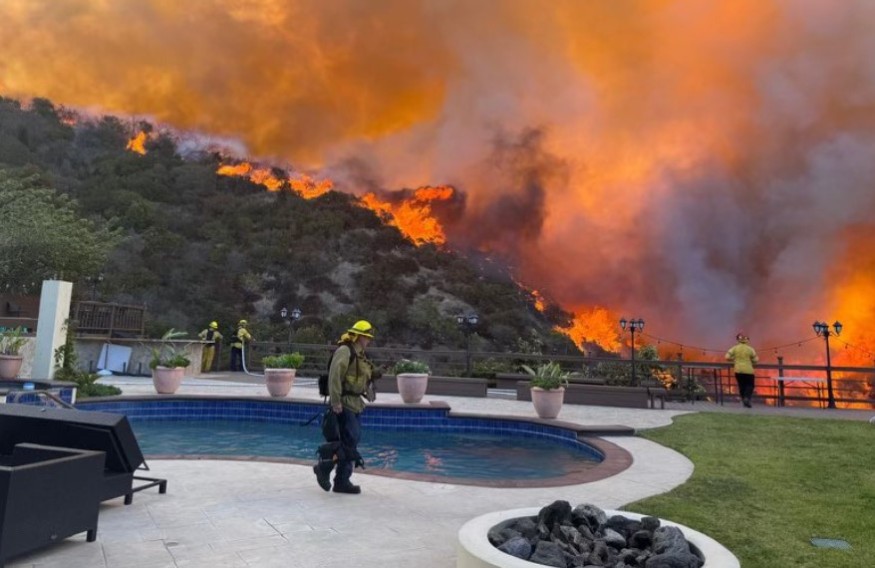
The Palisades wildfire, which erupted on January 7, 2023, in Los Angeles, has quickly become one of the most destructive fires the region has faced in years. By early Wednesday morning, the fire had scorched over 15,000 acres and destroyed nearly 1,000 homes, forcing tens of thousands of people to evacuate.
The cause and rapid spread of the blaze can be attributed to a combination of several alarming environmental factors that have made Southern California particularly vulnerable to wildfires this year.
Unprecedented Winds and Drought Fuel Southern California's Wildfire Crisis
At the center of the extreme fire risk is an unusual combination of the driest conditions recorded in the region and one of the strongest wind events since 2011.
Downtown Los Angeles, for instance, has only seen 0.16 inches of rain since May 6 of the previous year.
January, typically one of the wettest months, has so far failed to provide the necessary rainfall to dampen the landscape.
This lack of precipitation has left vegetation bone dry, and combined with powerful Santa Ana winds, it has created the perfect conditions for a devastating wildfire.
The winds, which can gust as high as 99 mph, have been particularly fierce, reaching speeds of 84 mph at Burbank Airport and 98 mph near the Palisades fire, Axios reported.
These winds are known to act like an "atmospheric blow dryer," drying out trees, bushes, and grasses, making them highly flammable. As the wind rushes down mountain slopes, it compresses and heats up, further lowering humidity and allowing fires to spread rapidly.
The wildfire season in California is traditionally thought to occur from May to October. However, recent research shows that due to rising temperatures and decreasing precipitation, the fire season is expanding.
Governor Gavin Newsom acknowledged that California is now experiencing "fire year" rather than just "fire season," with wildfires occurring year-round.
This shift is exacerbated by a weather phenomenon known as "weather whiplash," where extremely wet years are followed by dry spells that leave the landscape primed for fire.
The Dangerous Link Between Drought, Vegetation, and California's Wildfire Threat
Adding fuel to the fire is the overabundance of dried-out vegetation, a result of both record-high temperatures last summer and the wet winters in recent years.
Scientists explain that these conditions have led to what is called "excessive fuel loading," where large amounts of dry grass and brush have accumulated, further feeding the flames, Science News said.
The combination of high winds and abundant dry vegetation has made the Palisades fire spread faster than anticipated, burning through homes, businesses, and open land.
Researchers are still studying the exact impact of climate change on the current wildfire, but there is no doubt that it has contributed to the extreme conditions.
Climate change has led to hotter summers, drier winters, and more volatile weather patterns, all of which increase the frequency and severity of wildfires.
California's landscapes, especially those dominated by grass and brush, are highly susceptible to these rapid changes in weather, which allows wildfires to flourish.
The impact of the fire is not only limited to the destruction of homes and properties but also poses serious health risks.
Smoke from the Palisades wildfire has already affected air quality, particularly in coastal areas, and the fine particulates in the smoke can cause respiratory problems, especially for children, the elderly, and those with heart or lung conditions.
Health experts have urged residents to stay informed about air quality and take precautions to protect their health.
© 2025 NatureWorldNews.com All rights reserved. Do not reproduce without permission.





